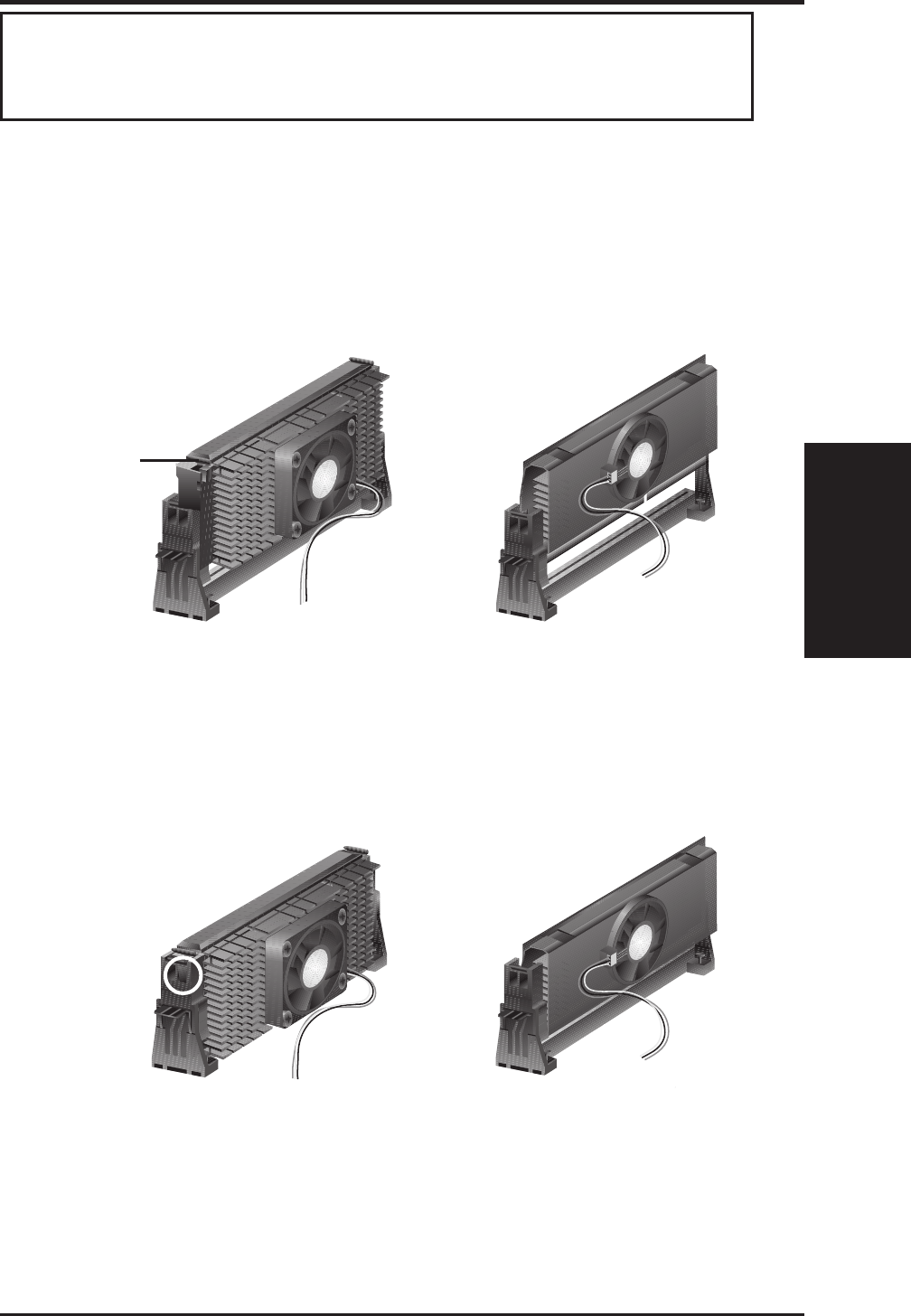
ASUS P2L97 User’s Manual 21
CPU
III. INSTALLATION
III. INSTALLATION
WARNING! Make sure the heatsink is mounted tightly against the SECC, SECC2
or SEPP; otherwise, the CPU will overheat. You may install an auxiliary fan to
provide adequate circulation across the processor’s passive heatsink.
4. Secure the SECC/SECC2/SEPP
Secure the SECC/SECC2/SEPP in place by pushing the SECC/SECC2/SEPP
until it is firmly seated on the Slot 1 connector.
SECC with Pentium
®
II only: The SECC locks should be outward when se-
cured so that the lock shows through the retention mechanism’s lock holes.
5. Attach the Thermal Sensor Cable (optional): If you purchased the especially
designed ASUS Smart Fan (ASUS S-P2FAN), which comes with a thermal sensor
built inside the CPU fan, or purchased separately the thermal sensor cable (ASUS
P2T-Cable), you can connect the P2T-Cable to your motherboard’s thermal sensor
connector. (See next page for information on ASUS Smart Thermal Solutions.)
3. Insert the SECC/SECC2/SEPP
SECC with Pentium
®
II only: Push the SECC’s two locks inward until you hear
a click (the picture in step 2 shows the locks in the outward position and inward in
the picture below).
With the heatsink facing the motherboard’s chipset, push the SECC, SECC2, or
SEPP gently but firmly into the Slot 1 connector until it is fully inserted.
SECC2/SEPP
Push lock inward
SECC
SECC SECC2/SEPP
CPU fan cable to
fan connector
CPU fan cable to
fan connector
CPU fan cable to
fan connector
CPU fan
cable to fan
connector
Lock hole


















